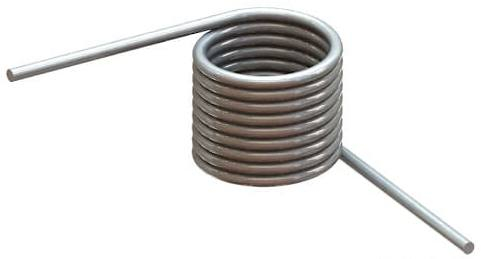
Welcome to the Onshape forum! Ask questions and join in the discussions about everything Onshape.
First time visiting? Here are some places to start:- Looking for a certain topic? Check out the categories filter or use Search (upper right).
- Need support? Ask a question to our Community Support category.
- Please submit support tickets for bugs but you can request improvements in the Product Feedback category.
- Be respectful, on topic and if you see a problem, Flag it.
If you would like to contact our Community Manager personally, feel free to send a private message or an email.
Options
Smooth (tangent) transition from a straight path to a helix path
 milan_jovanovic
Member Posts: 6 ✭✭
milan_jovanovic
Member Posts: 6 ✭✭
I am trying to get a smooth transition from a straight section to a helix. Like in a torsional spring, for example.

To do that, I am preparing a multi-part path, so that I can then sweep along it. I encounter two problems:

To do that, I am preparing a multi-part path, so that I can then sweep along it. I encounter two problems:
- I don't know how to fix the helix starting point to the end point of the straight path. I can get very close by changing the start angle of the helix.
- But then the helix path I get starts vertically at an angle to the straight path (it does not start as a tangent).
0
Best Answers
-
 mahir
Member, Developers Posts: 1,315 ✭✭✭✭✭
It feels a bit messy, but you can use a bridging curve to generate a point to point tangent line. You'll have to create a couple planes - one normal to the helix at an endpoint and another parallel plane offset by the desired length of the straight section. Then, create a sketch on the offset plane that has a single point converted from the helix endpoint. By construction, the line connecting the helix endpoint and this sketch point will be tangent to the helix itself. In my example I controlled the angle between start and end points by inputting an appropriate number of turns. For example, anything ending in .5 will be parallel (0 deg apart). Anything ending in .25 will be 90deg apart. In my example I chose 3.375 deg in order to get a 45deg angle.
mahir
Member, Developers Posts: 1,315 ✭✭✭✭✭
It feels a bit messy, but you can use a bridging curve to generate a point to point tangent line. You'll have to create a couple planes - one normal to the helix at an endpoint and another parallel plane offset by the desired length of the straight section. Then, create a sketch on the offset plane that has a single point converted from the helix endpoint. By construction, the line connecting the helix endpoint and this sketch point will be tangent to the helix itself. In my example I controlled the angle between start and end points by inputting an appropriate number of turns. For example, anything ending in .5 will be parallel (0 deg apart). Anything ending in .25 will be 90deg apart. In my example I chose 3.375 deg in order to get a 45deg angle.
https://cad.onshape.com/documents/57acdfaae4b005c413ed9b6f/w/3fd585a46d3af1b3ba413c53/e/1fff1f27f6553a553baa7ad0

1 -
 alnis
Member, Developers Posts: 452 EDU
Another way is to create planes on the ends of the coil, create sketches using on-the-fly mate connectors, realign them with those planes, rotate them on the y axis 90 degrees, and use arcs for a smooth tangent transition:
alnis
Member, Developers Posts: 452 EDU
Another way is to create planes on the ends of the coil, create sketches using on-the-fly mate connectors, realign them with those planes, rotate them on the y axis 90 degrees, and use arcs for a smooth tangent transition:
https://cad.onshape.com/documents/d52274d79094d1ad5ba30a71/w/184b8bd272091790e4a2c6c7/e/066aba2f72156eb326a1f29d
This seems pretty stable, but it's not very intuitive and maybe has some big problems I'm not seeing right now.Get in touch: contact@alnis.dev | My personal site: https://alnis.dev
@alnis is my personal account. @alnis_ptc is my official PTC account.0
Answers
https://cad.onshape.com/documents/57acdfaae4b005c413ed9b6f/w/3fd585a46d3af1b3ba413c53/e/1fff1f27f6553a553baa7ad0
https://cad.onshape.com/documents/d52274d79094d1ad5ba30a71/w/184b8bd272091790e4a2c6c7/e/066aba2f72156eb326a1f29d
This seems pretty stable, but it's not very intuitive and maybe has some big problems I'm not seeing right now.
@alnis is my personal account. @alnis_ptc is my official PTC account.
One issue might arise. This way straight paths are defined from the helix path. So the whole, more complex part, must be defined starting from the helix. For some parts that may be impossible.
https://cad.onshape.com/documents/57acdfaae4b005c413ed9b6f/w/3fd585a46d3af1b3ba413c53/e/c2625bd637f213bfc63464c3
Thanks @mahir!